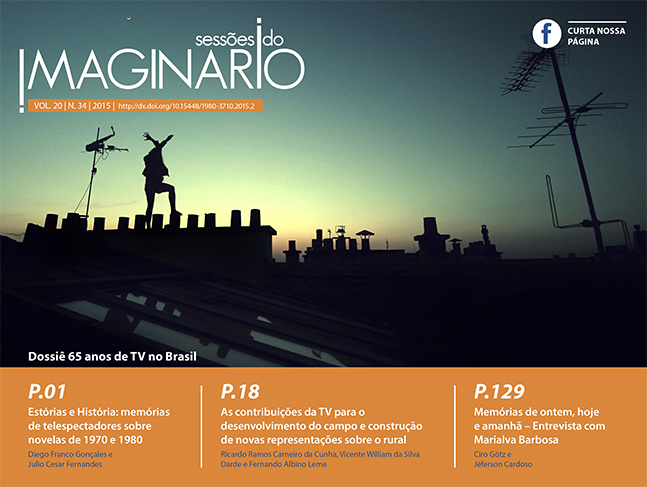Um Sai de Baixo "inferior"? - Vai que Cola e as premissas da valoração estética do humor televiso serial na perspectiva da crítica especializada
DOI:
https://doi.org/10.15448/1980-3710.2015.2.21234Keywords:
Televisão, Humor, Crítica, Vai que Cola, Sai de BaixoAbstract
Fenômeno de audiência entre programas nacionais exibidos na TV a cabo, Vai que Cola parece nunca ter agradado à crítica especializada apesar de suas semelhanças estruturais com outra série cômica, Sai de Baixo, esta sim sucesso de crítica e público. O que este artigo procura investigar, a partir da análise de algumas críticas sobre ambas as séries, é quais critérios de valoração estética estão por trás da desqualificação de Vai que Cola em relação a Sai Baixo e que aspectos estruturais das séries endossam tais juízos de valor sobre as mesmas. Para isso, propomos uma análise comparativa dos dois programas levando em consideração a as particularidade de seu gênero (o cômico), formato narrativo (a série) e endereçamento (o chamado público popular, no caso de Vai que Cola).
References
ARISTÓTELES. Arte Poética. São Paulo: Martin Claret, 2006.
BAKHTIN, Mikhael. A Cultura Popular na Idade Média e Renascimento: O Contexto de Fraçois Rabelais. São Paulo: Editora HUCITEC, 1987.
BARBERO, Jesús Martín. Dos Meios às Mediações: Comunicação, Cultura e Hegemonia. Rio de Janeiro: Ed. UFRJ, 2001, 2ª ed.
BERGSON, Henri. O Riso: Ensaio Sobre a Significação do Cômico. Rio de Janeiro: Zahar Editores, 1983.
BOURDIEU, Pierre. A Distinção. Porto Alegre: Zouk, 2007.
ECO, Umberto. Sobre os espelhos e outros ensaios. Rio de Janeiro: Nova, 1989.
___________¬_. Storia della Bruttezza. Milão: Bompiani, 2007.
VANDAELE, Jeroen. Humor Mechanisms in Film Comedy: Incongruity and Superiority. IN: Poetics Today. University of Oslo: Porter Institute for Poetics and Semiotics, 2002. pp. 221-249.
Downloads
Published
Issue
Section
License
Copyright (c) 2016 Sessões do Imaginário

This work is licensed under a Creative Commons Attribution-NonCommercial 4.0 International License.
COPYRIGHT
The submission of originals to Imaginario implies the transfer by the authors of the right for publication. Authors retain copyright and grant the journal right of first publication. If the authors wish to include the same data into another publication, they must cite Imaginario as the site of original publication.
CREATIVE COMMONS LICENSE
As this journal is open access, the articles are allowed free use in scientific and educational applications, with citation of the source.
According to the type of Creative Commons License (CC-BY 4.0) adopted by Imaginario, the user must respect the requirements below.
You are free to:
Share — copy and redistribute the material in any medium or format.
Adapt — remix, transform, and build upon the material for any purpose, even commercially.
However, only under the following terms:
Attribution — You must give appropriate credit, provide a link to the license, and indicate if changes were made. You may do so in any reasonable manner, but not in any way that suggests Imaginario endorses you or your use.
No additional restrictions — You may not apply legal terms or technological measures that legally restrict others from doing anything the license permits.
Notices:
You do not have to comply with the license for elements of the material in the public domain or where your use is permitted by an applicable exception or limitation.
No warranties are given. The license may not give you all of the permissions necessary for your intended use. For example, other rights such as publicity, privacy, or moral rights may limit how you use the material.
For more details on the Creative Commons license, please follow the link in the footer of this website.

